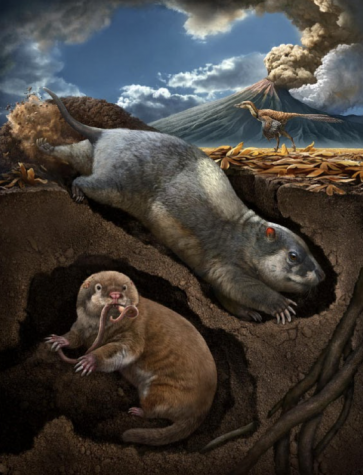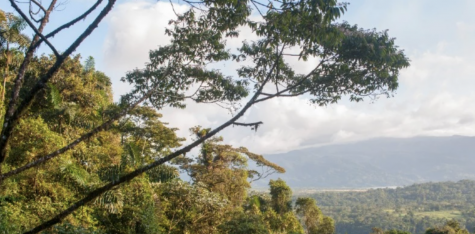2022 Brings Electric Planes and Bomb Cyclones
Electricity Set to Take Another Leap
Electricity has been used for 171 years to power various modes of transportation. In 1871, an inventor from Massachusetts named Charles Grafton Page drove an electric car on the tracks of the Baltimore and Ohio Railroad from Washington D.C. to Bladensburg, Maryland. Top speed? 19 mph. Didn’t last, though. The cost of batteries killed the project.
Guess (and no reading ahead!): When did the first electric car debut in the United States?
1890. William Morrison, a Des Moines chemist, built a six-passenger vehicle whose top speed was 14 miles per hour. Really, it was an electric wagon, but it kick-started interest in electric vehicles.
Over the next few years, electric vehicles from different automakers appeared across the U.S. And get this: New York City had a fleet of more than 60 electric taxis. By 1900, electric cars accounted for about a third of all vehicles on the road. During the next 10 years, they continued to sell well.
Henry Ford nixed the electric car’s future when he began mass-producing the Model T. Introduced in 1908, the Model T made gasoline-powered cars widely available and affordable. By 1912, the gasoline car cost $650, while an electric roadster sold for $1,750. That same year, Charles Kettering introduced the electric starter, eliminating the need for the hand crank and giving rise to more gasoline-powered vehicle sales.
Now, though, electric cars have come into their own, and they’re touted as one of the ways in which we may ween ourselves from our dependency on fossil fuels.
What’s not yet come into its own, but may well be heading there? The electric airplane. No, not a hand-held! One the size that we turn our heads to see taking off from Burlington International Airport.
A good idea? Apparently so. Last week, Rolls Royce announced that their electric propellor-driven aircraft, “Spirit of Innovation,” flew a record-setting, zero-emission 245 mph. Blew the doors off that original “flight” speed of 19 mph, eh?
But wait! There’s more! In a matter of weeks, the company Eviation will test a nine-passenger electric commuter plane named “Alice.”
We’re on our way to electric flight, it seems. It gives one pause, however, to imagine what would happen if a plane had to hold in a flight pattern, circling an airport, running its batteries down. Sure, jet fuel has the same limitation, but there’s something unnerving about running on empty in a battery-powered plane at nine thousand feet.
But, like the electric car’s trajectory, electric-powered aircraft flight could well be in our collective futures. Hold on for electricity’s next leap.
Excerpted from “Are Electric Plans Finally Ready for Takeoff?” and “The History of the Electric Car“
“Bomb cyclone.” Sounds sinister. Even intimidating.
Residents of the east coast experienced one first-hand last week. It dropped up to 30 inches of snow in some parts of coastal Massachusetts. Its heavy winds knocked out power to hundreds of thousands of homes, and it caused the cancellation of thousands of flights.
So, what gives? What’s a bomb cyclone? Here’s how NOAA describes it: Basically, it’s a winter hurricane. It occurs when a mid-latitude cyclone rapidly intensifies, or quickly drops in atmospheric pressure, marking the strengthening of the storm.
It packed a punch, for sure:
- Boston recorded its biggest any-single-day snowfall at 23.6 inches Saturday, Jan. 29;
- Fourteen inches dropped on Atlantic City, New Jersey;
- In Philly? 5.8 inches, the most ever recorded on January 29;
- Central Park got 7.3 inches;
- Plus, the coast, in blizzard conditions, felt the impact of a storm surge, coastal flooding, wind damage and beach erosion.
When a cyclone “bombs,” it undergoes “bombogenesis.” It’s like this: Bomb cyclones draw their energy from large temperature contrasts, which are common along the U.S. East Coast during winter when there’s “a naturally potent thermal contrast between the cool land and the warm Gulf Stream current.”
We could be hit by more of these with global warming increasing. Jonathan Overpeck, Ph.D., a climate scientist, professor and dean of the School for Environment and Sustainability at the University of Michigan, thinks so. “Unless we act to stop climate change, we’ll continue to see an increase in severe and impactful winter storms, just as we’ll continue to see more severe and impactful hurricanes in warmer months, along with expanded tornado damage.”
I guess we play the odds, right? But would you bet that members of Congress will look up enough to see what’s happening outside their bubble?
Excerpted from: “What Is A Bomb Cyclone? An Atmospheric Scientist Explains” and “Northeast faces below-freezing temperatures as it recovers from record-breaking weekend snowstorm.“






